My understanding is that the Golden quail I have belong to the two main types of 'Golds', which in English are known as the Italian and the Manchurian. However, as discussed in previous articles, some breeders insist that these are alternate names for the same golden bird! Whatever your belief, there are nuances due to patterns and markings (see the 'Italian Speckled' female below), which do seem to merit their own specific nomenclature. Equally important, is the vexed question of genetics in the golden colouring of fur and feathers; i.e. the yellow allele, which is lethal when homozygous but more of this later.
In France, life is much simpler and all the golden quail are just known under the one name of 'Isabelle' (variation Isobel or Isabela), a colour which came into being due to an oath taken by Queen Isabella of Spain. Legend has it that during the siege of Granada (1482 - 1492), the Queen declared that she wouldn't change her court dress until the battle was over and Granada was back under Spanish rule. By the end of the siege, the Queen's dress had taken on colours associated with the heat and dust of the battlefield, rust red, white and black. To commemorate the event, the colour known as Isabelle was established and is a recognised standard for cats (apparently only female felines can attain this particular shade), horses, dogs and quail. As all the original Golden quail in France, are said to descend from a small clutch of 20 eggs brought over from Portugal via Spain, this may also explain its use as a colour here.
In France, life is much simpler and all the golden quail are just known under the one name of 'Isabelle' (variation Isobel or Isabela), a colour which came into being due to an oath taken by Queen Isabella of Spain. Legend has it that during the siege of Granada (1482 - 1492), the Queen declared that she wouldn't change her court dress until the battle was over and Granada was back under Spanish rule. By the end of the siege, the Queen's dress had taken on colours associated with the heat and dust of the battlefield, rust red, white and black. To commemorate the event, the colour known as Isabelle was established and is a recognised standard for cats (apparently only female felines can attain this particular shade), horses, dogs and quail. As all the original Golden quail in France, are said to descend from a small clutch of 20 eggs brought over from Portugal via Spain, this may also explain its use as a colour here.
The Lethal Yellow Allele
Most things associated with genetics are liable to make my eyes glaze over but I'll have a go all the same. It's important for me to try to understand this because it begs the question on both whether or not there are two types of golden quail and furthermore, on how safe or otherwise it is to breed golden to golden. My understanding of this allele is that it produces a plumage that is 'wheat-straw yellow'. In addition, this is a dominant mutation which is lethal when the embryo has two identical alleles for this trait, which can be expressed as YY. I believe this was discovered, as many genetic expressions have been, by extrapolation from abnormal birth ratios. Thus, in studies looking at mice the allele for yellow fur (Y) is dominant over that for grey (y) so when a pair of yellow furred heterozygous mice (Yy), (thus having non-identical alleles for their yellow colour), get together, they are expected to produce a much greater ratio of yellow baby mice to grey and the fact that they don't is because the YY mice babies do not survive to birth.
This might explain why many breeders seem to have no problem producing golden chicks but there are umpteen academic papers on how Manchurian golden quail do have problems. To me therefore it would seem logical that there are two distinctively different breeds of Golden quail. Convincing or not, this is what my so-called Italian golden quail chicks (including the Italian Speckled variation) look like and why I am wary of crossing my Manchurian females with Manchurian males
If you are interested in finding out more about genetics then I can recommend this book 'Genetics of the Fowl' by Hutt, I have a copy and dip into it quite often when I'm researching specific breeds or attributes, it's not the sort of work I would want to read read at a sitting!
As with many seminal works it is quite pricey but I see there are various sites which have a pdf version.
Italian Gold
The Golden Italian is the name used for golden plumage, lightly speckled mainly on the back and sides with rust, white and black. The males have a Zorro type mask that gets more distinctive as they get older and also in the breeding season, whereas the females have black speckled markings in bands around the back and sides of the head, emanating Cleopatra-like from the corners of the eye.
The other interesting trait of the Goldens, is that they were the first of all my quail to make nests, go broody and sit eggs. Logic dictated, that once we had provided both suitable nourishment and environment it would have been my brown Pharaoh quail, which would have done this first, being nearer to the wild European version. Furthermore, it was my Golden quail, Tuxedo and English White that were the first to form monogamous pairs. Below is my beautiful Golden Italian Quail with a Rosetta Tuxedo and English White chick.
Below is one of my Golden Italian males (actually Antonio, as I can't get away from the idea of Zorro) in full Summer colours. I actually believe he is an Italian x Manchurian because his mask, now in the breeding season, is much more spectacular than the norm!
Close up of two Italian Gold chicks.

Left: Chick Soaking up the rays and creating some valuable Vitamin D3.
Photogenic juvenile: below.
Italian Speckled
I have quite a few of these but mostly females. The male are almost identical to the female except for the usual golden quail brown/black mask. As with the Italian Golds, the females have distinctive dark speckled banding around the back of the head. They are incredibly striking aesthetically and again as with the other Italian Quail, in my experience they make excellent bonded pairs and really caring mothers.
Above three female Italian Speckled and an English White Male. Below a juvenile Italian Speckled.
As mentioned above, it was my Golden quail which were the first to nest and become broody. However as many Goldens are bred from crossing with Pharaoh my anecdotal
evidence is that crosses have strong maternal instincts. For example, Lucky (left) is a Sebright cross hen, whereas Sebrights are notoriously short-term mothers. The chick she is free-ranging and teaching how to forage is a juvenile male Italian
Speckled.
Below is a whole drift of Golden Quail including male and female Golden Italian and Speckled Italian (and Manchurian).
Below is a whole drift of Golden Quail including male and female Golden Italian and Speckled Italian (and Manchurian).
Below, a very affectionate Italian Speckled quail chick...
and our very loveable 'Golden Grandma', a 5 year old Italian Speckled female.
Manchurian
This then would be the colour I would think of as 'wheat straw'. Here below is Alphonse in full cry and in full Summer plumage.
..and here he is again at just two and a half months old.
Left is Caramel with her chicks, once again a great mother. Unlike two of my other golden females, she did not actually pair bond with a male. She became broody only a few days before I had an emergency with a quail hatch and she obliged by accepting the chicks. She has been the most amazingly vocal of all my quail, producing what I can only think of as wild quail calls to her chicks. She has given me great hopes that eventually the original and presumed extinct (after WWI) 'Singing' coturnix quail will return!
Now here's the film:
In Conclusion
Convinced or not, I hope I've illustrated the beauty of these Golden quail.
It was a mixture of Pharaoh and 'Isabelle' eggs which cured Andy's hay fever and eczema. The Golden quail have been instrumental in making my dreams come true, for a coturnix to raise her own chicks.
I started raising my quail with a hen, I've never used an incubator but if you are just beginning with quail and do not have a suitable bantam then that is an option. As far as I am concerned quail are wonderful little birds and a joy to keep, whatever the colour!
Thanks for dropping by and do feel free to share experiences or ask for further information in the comment section. If you have enjoyed this piece and found it useful think about sharing it with your family and friends, on social media and also maybe about joining this blog and/or subscribing to my Youtube, Odysee or BitChute Channel or even supporting us on Patreon or
It all helps to keep me going!
Until next time when I will be discussing English White and Tuxedo, Sue
RELATED ARTICLES

Colours of Coturnix Japonica Quail Part 3 White, Panda, Tibetan, Rosetta & Tuxedo
I'm not sure why this would be, possibly hidden within the genetics of
breeding these lovable creatures but along with the golden quail....read more
The Colours of Coturnix Quail Part 1 - Pharaoh aka Brown
In the pages of this site, I write mostly on practical issues and as
'The Holistic Hen', I do always hope that I am looking at the whole
bird. Thus plumage colour is important but just for once....read more
 Tips and strategies for raising natural organic quail chicks
Tips and strategies for raising natural organic quail chicks
I hadn't really intended that 'Snow Kitten' should raise quail but she
was broody and I'm always wanting to spread the word on cage-free quail.
In fact it caused quite a stir and eve...read more
Encouraging Pair-bonding, Nesting and Broodiness in Coturnix Quail
Introduction to the setting up of a safe quail breeding area. Andy and I
created this last year but the broody quail beat us to it...read more
 A comprehensive guide into the history & use of quail eggs in medicine Part 1
A comprehensive guide into the history & use of quail eggs in medicine Part 1
How we cured Andy's hay fever and eczema with a dip into Ancient Egypt and 60's France...read more
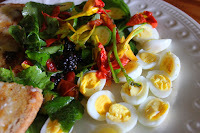 A comprehensive guide into the history & use of quail eggs in medicine Part 2
A comprehensive guide into the history & use of quail eggs in medicine Part 2
Now we eat quail eggs for pleasure..here I look in depth at the clinical
trials in the 1960s and the posology used then and by us...read moreRETURN TO CONTENTS PAGE
© 2021 Sue Cross










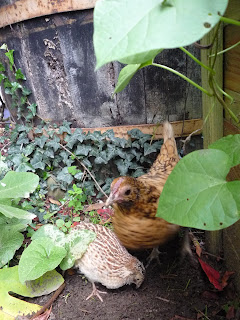


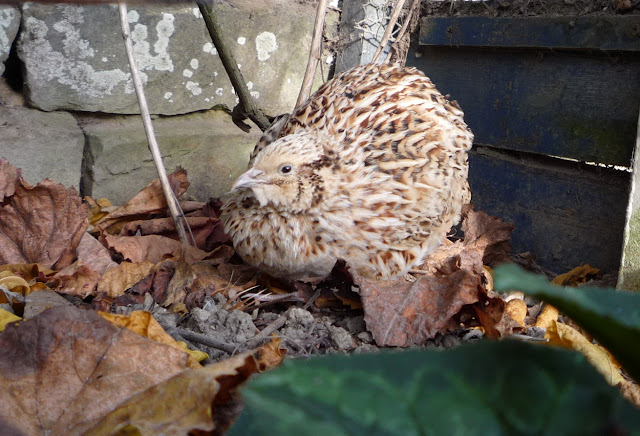
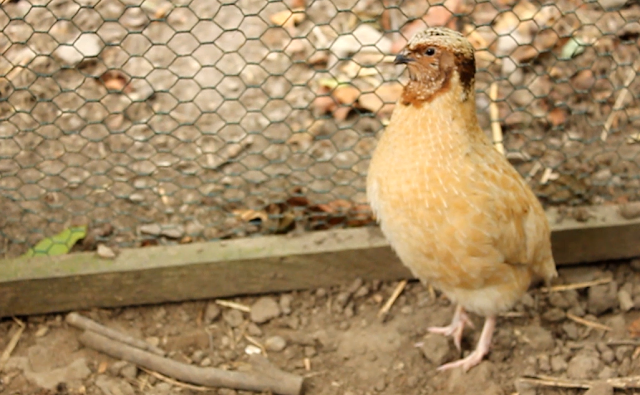
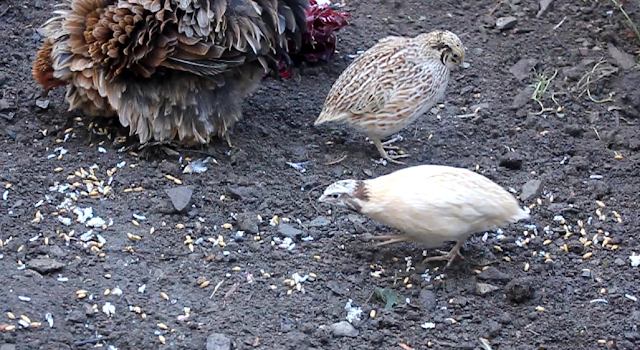

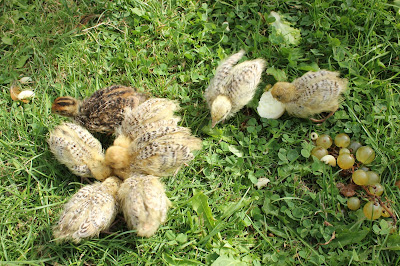




I just read all of your posts about quails. I'm planning on raising quails pretty much the same way as you do and all your experience has been greatly valuable to me. Greetings from Mexico.
ReplyDeleteHi Edgar, I am so sorry only I only just found your comment. There was an update to Blogger last year and we were required to re-register to receive updates from our own blogs! I think it was a blanket operation under the new European and US privacy laws. To say the least, it was not well explained and whatever I was supposed to do, I didn't.
DeleteI do hope you are doing well with your quail, I am guessing your environment in Mexico would be a very suitable one for them, rather than rainy Normandie, where they spend nearly a third of the year within a greenhouse, even though it is planted up as a 'forest' garden. I also hope you have written up and/or filmed your experience and please do send me the links to your sites if you have. Quail need good people like yourself on their side to promote ethical keeping and restore their faith in human nature! All the very best and hope to hear from you, Sue